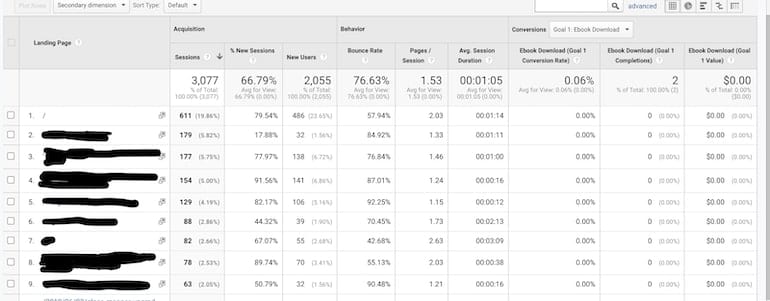When it comes to PPC, people are focused on the ads, the creative, and the targeting to determine whether or not users will interact with their brand. While these things do play a big role in user interaction, one important aspect is still missing in this equation: landing pages. Landing pages play a huge role in getting users to convert. If conversions are important to your advertising goals (and they should be), you should be concerned with your landing pages.
Because a landing page can make or break a conversion, ensure that your landing page experience is top-notch.
What is “top-notch” exactly?
You want to create a user-friendly landing page that doesn’t make users think.
If a user is easily able to navigate your page and checkout without a second of confusion, that means more conversions for you. (If someone gets confused or frustrated with the cart on your website, for example, they may give up and go to Amazon where they’re likely familiar with the checkout page.)
How can you be sure your landing pages are performing well? In this blog, I will introduce 3 different ways to analyze landing page performance.
Before diving in, let’s go over the metrics that help you determine a landing page isn’t working in the first place.
Is the landing page the problem?
If conversions are trending low, you need to determine if your PPC campaigns need optimizations or if the landing page is the real culprit.
To determine if the disruption in traffic you are seeing is coming from your landing page
- Check for major fluctuations in clicks and CTR
- Check your mobile site speed
- Double-check that your conversions are tracking properly
CRO
If you are experiencing low conv. rates, high bounce rates, low time on page, or a drop in traffic, CRO (conversion rate optimization) can help you run landing page tests to determine what’s wrong. In short, CRO uses tools that track user behavior to analyze points of friction and run tests to improve those points of friction (friction that causes a user to get confused and give up on the service or product you’re offering). CRO teams may also gather user testimonials to further understand what users are thinking about as they peruse your website.
CRO tools include A/B testing, heat maps, and confetti maps to name a few. These tools accurately depict where users are spending their time when they are on your landing page. Heat maps and confetti maps light up the parts of the landing page that the user is spending the most time on or clicking on the most.
CRO testing determines which parts of the page the users find useful and which parts get skipped over. You might test aspects of the landing page like picture placement, text placement, page layout, and CTA text or color. You can spend all the time you want on good ad copy and good creative, but if you send users to a landing page that is not user friendly, they won’t convert.
For more on CRO, check out Conversion Rate Optimization 101: Maximizing the Post-Click Experience.
Google Analytics
GA is one of the best places to analyze landing page performance. And it’s free! You are able to do all kinds of things in GA regarding landing pages.
You can
- See traffic coming in from different sources
- Review site visitor demographics
- Get insights into page views
The most insightful metrics in GA for landing page analysis are
- Page views
- Pages per session
- Session duration
- Bounce rate
A bounce, defined by Google, is a single-page session on your site. Bounce rate is all of the single-page sessions divided by all of the sessions in total. Depending on your site content, a high bounce rate could be perfectly fine for you. For example, if your site is only a single page, then your bounce rate will automatically be high because users have no other pages to navigate to. If there are multiple pages in a user’s conversion path, then a higher bounce rate might be a problem. Below is an example of some of these metrics in Google Analytics.

If you want to dive deeper than these basic site engagement metrics, check out 7, That’s Right, 7 More Google Analytics Metrics You Should Be Using For CRO.
Third-Party Platforms
If you don’t have the time to manage a CRO process or dig into GA every week, third party platforms, like HubSpot, SEMrush, Unbounce, etc. are great for landing page analysis. They have their own tools that will analyze your landing pages based on content and they have tools for A/B testing. For example, in HubSpot’s tool, you can choose to analyze a blog page or a landing page, and get a report on all of the metrics I have mentioned in this blog so far, and then some! With SEMrush, you are able to see all the landing pages on your site and get a keyword count for each one. Tools like these are great for spotting weaknesses in your landing pages, often much faster than using the free tools.




